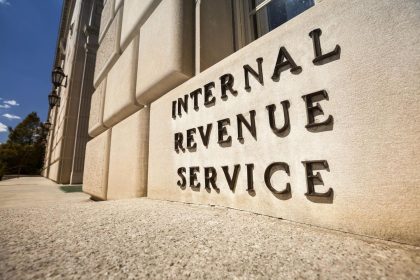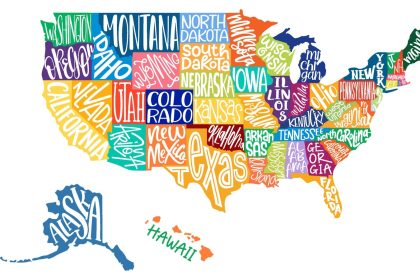Alysse McLoughlin and Katie Quinn of Jones Walker discuss state tax implications of the Inflation Reduction Act’s clean energy credits.
This transcript has been edited for length and clarity.
David D. Stewart: Welcome to the podcast. I’m David Stewart, editor in chief of Tax Notes Today International. This week: taking credit.
Now, we’ve talked a lot about the changes the Inflation Reduction Act has had on taxes and credits at the federal level, and we’ll link to those episodes in the show notes. But today we’re taking a closer look at its impact on energy credits at the state level.
So here to walk us through the topic is Tax Notes State Editor in Chief Audrey Pollitt. Audrey, welcome back to the podcast.
Audrey E.P. Pollitt: Thanks for having me, Dave.
David D. Stewart: So to begin with, could you give us a background on these credits?
Audrey E.P. Pollitt: Sure. The IRA created federal income tax credits to incentivize investment in clean energy projects. The credit’s popularity is partly attributable to their transferability, meaning an entity that doesn’t use all of a credit can sell that unused portion to a third-party purchaser. The seller typically uses the proceeds from that sale to finance eligible projects, and the purchaser has the economic benefit of buying a credit at a discount. And what’s perhaps even better, the purchaser won’t recognize gain on its use of the credit for federal income tax purposes. Sounds like a win-win situation, right? Here’s the catch: Not all states follow this federal relief provision, and those states may try to treat the purchaser’s use of the credit as a gain recognition event when computing state taxable income.
David D. Stewart: Now, I understand you recently did an interview about this topic. Who’d you talk to?
Audrey E.P. Pollitt: I spoke with Alysse McLoughlin and Katie Quinn, partners at Jones Walker and Tax Notes State columnists.
David D. Stewart: And what did you talk about?
Audrey E.P. Pollitt: We talked about their April 15 article, “A Trap for the Unwary Purchaser of an IRA Credit,” which flagged this big potential pitfall for taxpayers buying energy credits at a discount in static conformity and decoupled states.
David D. Stewart: All right, let’s go to that interview.
Audrey E.P. Pollitt: Katie, Alysse, thank you both so much for joining me today for a conversation about the hidden state tax issues that could arise from purchasing Inflation Reduction Act credits.
Alysse McLoughlin: Thank you very much for having us on.
Kathleen Quinn: Thank you for having us.
Audrey E.P. Pollitt: Absolutely. We were initially scheduled to record this episode on April 25. I was raring to go and so excited to speak with you both about your April 15 article. But then, just before we were meant to meet, Treasury dropped the final regs on the transferability of certain energy credits, and it seemed only responsible to postpone our talk. Those regs — the final ones — were officially published April 30, will be effective July 1, and are responsible for giving me a minor heart attack. In broad strokes, and let’s start with Katie, can you tell our listeners what happened in the time between the IRA’s enactment and the issuance of the proposed and now finalized regs?
Kathleen Quinn: Sure. Thanks, Audrey, again for having us. So the Inflation Reduction Act was passed in 2022, and among other things, the act provided for new — we’ll call them new and some improved federal tax credits. And these credits were designed to incentivize investment in renewable energy projects. What we’ll focus on today, and one of the major improvements to these credits, is that the credits were made transferable. And what that means is that they can be sold by the party that generates the credits, and typically these credits are sold at a discount, which provides the benefit for the purchaser of the credit. And Congress’s goal in allowing transferability was to allow businesses that don’t have sufficient federal taxable income to use the credits to nevertheless benefit from the credits by monetizing them through a sale. And one of the spokes of this goal was that the proceeds of the credit sale could be used as financing for the developer.
So this would allow for increased financing for developers of renewable energy projects, which would just make these projects more prevalent. Now, so that’s the background of the Inflation Reduction Act. Now let’s talk about just general federal guidance regarding the use of a tax credit purchase at a discount. There is some federal guidance out there which predated the Inflation Reduction Act, and this concerns the use of a Massachusetts tax credit purchase at a discount. And what chief counsel says is that the purchaser of a tax credit at a discount recognizes gain on the use of that credit, and the gain would be based upon the purchase price and the actual credit amount. So the difference would be the gain.
Now, the Inflation Reduction — there were proposed regulations implemented in the Inflation Reduction Act, and those proposed regulations said that the purchaser of an IRA credit purchased at a discount, when that credit was used, there would be no gain recognition for the purchaser. Those regulations were finalized without change last month. So now the final rule is that the purchaser of an IRA credit at a discount does not recognize gain when it uses the credit.
Audrey E.P. Pollitt: So that’s the federal treatment. What happens at the state level?
Alysse McLoughlin: At the state level — I think we need to take a step back, and we understand at the state level, when states impose their income taxes, it’s generally based on federal taxable income, with certain adjustments. So for most states, if they are using the federal taxable income as a starting point, then because there is no gain that is being taxed at the federal level, there will also be no gain taxed at the state level. The problem comes in in how the states actually adapt to the federal taxable income base, and some states, they have rolling conformity, so any change that happens at the federal level automatically impacts the state base also, unless the state specifically decides to diverge from that and to put in a modification. There are other states, however, where they adopt the code every year, every two years, every three years, every four years, or something.
So in certain cases they might not have adopted the provisions of the Inflation Reduction Act yet. And therefore in those states there could be a tax liability by purchasing a credit at a discount, and that would impact the amount that could be subject to tax in those states. For instance, Texas, I believe, has never conformed to the Internal Revenue Code since 2007. So there it could be in the tax base. California also has not conformed to the Inflation Reduction Act yet. So there there also could be gain. And the reason there’s gain is if we go back to this at the federal level, when we talk about that the regulations said that there was no gain, they based that on the provisions of the Internal Revenue Code section 6418, which was adopted in the Inflation [Reduction] Act.
And this one says that when there’s a transfer of a credit, that the transferee taxpayer shall be treated as the taxpayer for purposes of the code with respect to such credit. And they said because of that provision, that’s why they think there is no taxable gain, and that’s why they put that in the regulations. They based it off of that. If a state is not following the Internal Revenue Code from the Inflation Reduction Act year, then they don’t have that provision saying that the transferee taxpayer really steps into the shoes of the transferor taxpayer. And we think there is a fair chance that that can be taxable in those states.
Audrey E.P. Pollitt: Alysse, let’s turn to two static conformity states with outsized energy markets: Texas, first in the nation in total electricity generation for renewable resources, and California, second nationwide and the top producer of electricity from solar energy.
Alysse McLoughlin: So the issue then in those states — I know that there is an issue, as you said, because Texas and California have very large markets, but the issue is broader than that, because even if you have a taxpayer that is in California, if they buy a credit that is located in Oklahoma, let’s say, it still goes into their tax base. So this impacts credits all over the country for taxpayers that are in, let’s say, California or in Texas.
Audrey E.P. Pollitt: Katie, can you talk to us a bit about where taxpayers can find this information and how your practice monitors state conformity?
Kathleen Quinn: Yes. So there are a number of things to look at in the various state tax laws to determine whether the non-gain recognition provisions of the IRA will apply at the state level. So the first thing — Alysse touched on this — is the conformity date. So if a state law conforms to the Internal Revenue Code as of a date before the Inflation Reduction Act in 2022, you know there’s a potential issue. Secondly, some states will be rolling conformity or will conform post-2022 to the IRC, but they’ll decouple from all Inflation Reduction Act provisions or certain provisions. And this is very common when federal tax acts are passed — sometimes states will cherry-pick which provisions they do not want to conform to. So that’s something that you should look at. Then, decoupling from just generally federal tax credit provisions. So we see this — California is a very good example of this — California conforms to the Internal Revenue Code before the Inflation Reduction Act, so we have that issue as well.
But California also says that in applying the Internal Revenue Code at the state level, provisions concerning federal tax credits do not apply. So what that means is [section] 6418, the provision allowing for transferability, and the regulations implementing that provision, providing for no gain recognition, arguably or explicitly do not apply in California. And then the last thing that you should look for is state modification. So this won’t be in the IRC conformity sections of the tax law; this will be in the addback section. So if the state starts with federal taxable income, it provides for addbacks to federal taxable income and then deductions from federal taxable income. So look for addbacks for amounts “excluded” from federal income.
And when you’re looking at these provisions, the words really matter. So you have to make sure if the statute says that they don’t allow federal deductions, that’s not as concerning when it comes to the Inflation Reduction Act, because the IRA gain nonrecognition provisions, really, they say that the gain never comes into federal taxable income. So it’s not really a federal deduction, it’s more of a federal exclusion. So if you see modifications like this, just make sure that you look at whether it’s an addback for federal exclusions, federal deductions, federal exemptions. And then you probably also want to look at the case law in the state. How are the courts interpreting these addbacks?
Alysse McLoughlin: Right. And is there any case law on the state dealing with transfer of tax credits in general? Also, one interesting thing, I think, Katie, what you said about California is California says, “We ignore any provisions talking about federal tax credits.” So even if they go up to Inflation Reduction Act years, the question is whether they will even look at this section 6418 and talk about whether there is the transfer of a credit as stepping into the shoes of the taxpayer and making this a nonevent because they don’t look at any credit provisions in the code. However, they also then — you might be able to say there really is no transfer that occurs, and therefore there’s no gain. So California’s rules, I think, are just very confusing and very open as to what the real answer will be in California.
Audrey E.P. Pollitt: Well, Alysse, that sounds like a bit in your article where y’all talked about arguments against taxing this type of gain. Would you mind expanding on those arguments?
Alysse McLoughlin: Yeah, sure, I will do that. And I know we had mentioned before how, for instance, California and Texas, two of the states that don’t conform, have some of the biggest market for these types of facilities for solar projects and wind projects and other things that are out there. And in general, we would think that states should be on board with encouraging these types of investments, just like the federal government is doing. We all are aware that global warming is there, and just trying to get some types of energy sources that are less damaging to the environment and less damaging to the world. So we think that’s important, especially in today’s age, where there’s such more of a use for energy.
Even if we look at AI and bitcoin mining, there’s a much larger use of electricity than there used to be. It seems like the use for electricity just grows and grows and grows, so there is more of a need for these renewable energy resources. So we think that all states should really be on board with this. And this is something where states should be trying to coordinate with the federal government — and that’s especially, like we said, in Texas and California, where they have such a large market for this and they are so invested in these types of projects. That’s something that we think, just as a policy perspective, they should be on board with.
Audrey E.P. Pollitt: Other than taxnotes.com, where can our listeners find you online for the latest on next steps and future developments?
Alysse McLoughlin: You can find me and Katie at [email protected] or [email protected], or even if you just go to the Jones Walker law firm website, you can find us there. And we do have a blog that we put out with updates that will address any kind of state tax developments that arise in this area.
Audrey E.P. Pollitt: Fantastic. Katie, Alysse, thank you both so much for joining us.
Alysse McLoughlin: Thank you.
Kathleen Quinn: Thank you for having us.
Read the full article here


















